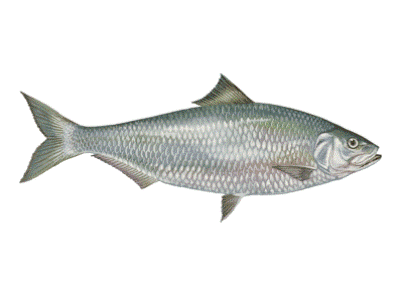
American shad are the largest members of the shad-herring family. During the spawning season males are called “bucks”; females are known as “roe shad.”
Each spring, American shad migrate from the Atlantic ocean into rivers and creeks of the Mid Atlantic region.
After traveling hundreds of miles, they spawn in their natal streams and then make their way back out to sea.
Although they do not eat during their migration, shad readily take artificial lures. When fishing for shad, anglers typically use shad darts or other small jigs. Small shiny spoons are also effective.
Fly fishermen catch shad as well, using small bright streamers, or other patterns. Shad are known for their spectacular leaps and runs when hooked.
American shad are managed cooperatively by the Atlantic States Marine Fisheries Commission (ASMFC) through the Interstate Fishery Management Plan (FMP) for Shad and River Herring. Coastal states from Maine to Florida set regulations which must meet standards that are defined in the FMP.
American shad are sometimes found together with other anadromous fish species including hickory shad and river herring.